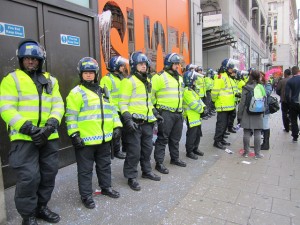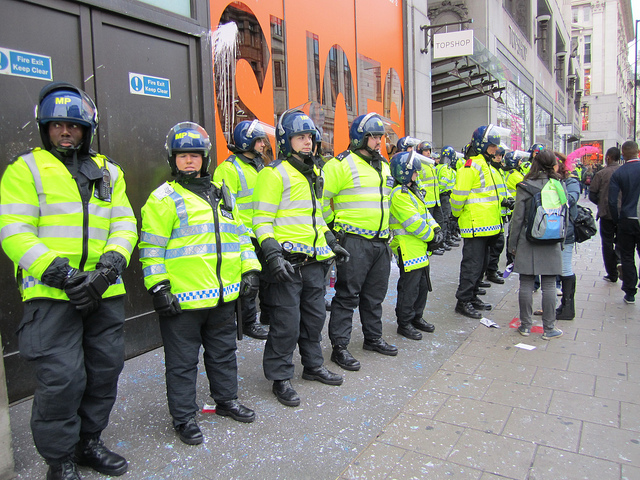 British papers are full of news stories and commentary about the role social media has played in the riots that rocked London and other major cities.
British papers are full of news stories and commentary about the role social media has played in the riots that rocked London and other major cities.
Prime Minister David Cameron’s calls to shut down some sites have been met with a barrage of criticism, such as this op-ed in the Guardian. Others have attacked the government’s overall response, including its attack on social media outlets and the deployment of water cannons comparing the aggressive behavior to the Mubarak regime’s initial response to the Egyptian uprising.
The Telegraph has a stream of comments on its web site, some from former police officers, critical of the police for not being aggressive enough, including their hesitation in shutting down the Blackberry and other cellular networks. The Blackberry network was reportedly instrumental in maintaining anonymity for many protestors and organizing riots.
For a balanced view of the role of social media during England’s worst outbreak of domestic violence in decades, see this post by London-based journalist Adam Westbrook.
Meanwhile, back in the United States, the police seem to be using social media to get ahead of any evil intentions.
A new juvenile justice unit of the New York Police Department is using the same social media tools -- mostly Twitter, MySpace and Facebook -- to discover and track troublesome house parties, gang showdowns and other potential mayhem, according to an article on NYDailyNews.com.
Under Police Commissioner Raymond Kelly, the NYPD has already used technology to help solve a number of juvenile cases, including an anti-gay attack at a house party and a shooting at a reunion that went viral on Twitter. He instructs all police commanders to keep track of house parties, especially those advertising online.
In June, JJIE reported on an incident in Boston involving police who used social media to track teens, but mislabeled groups as gangs. The media jumped on the story and the “gang violence” spread quickly. As articles were published, teens with knowledge of the gatherings disagreed with them.
One user wrote as a comment to a news article, “it was no gang fight, I was there.” Others made similar remarks.
Photo credit: mastermaq on Flickr.

This is outrageous. I hope we do see protests against this clear violation of people’s constitutional rights. But unlike what’s happening in the UK, I hope the youth are very strategic in their message and organizing so that any violence never occurs and they don’t give the police a “rope” to hang this movement with.